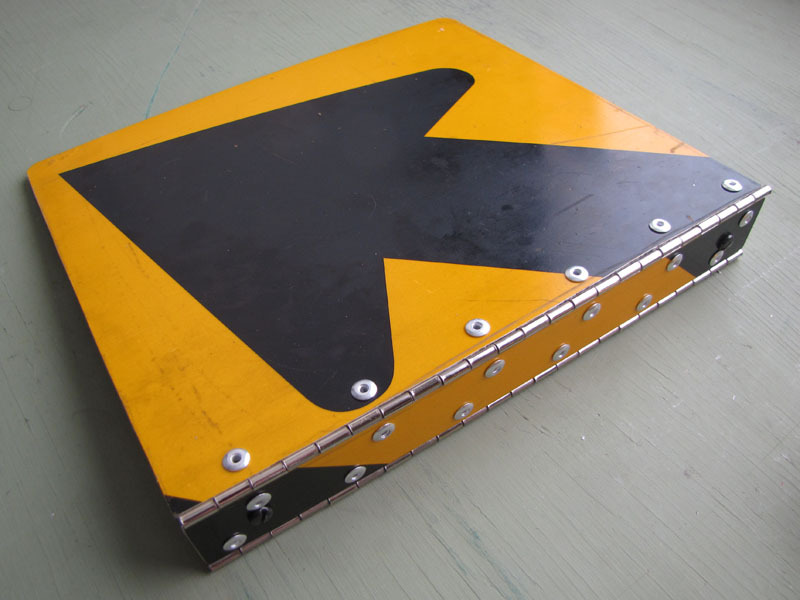OK, so it’s not, actually. Bulletproof, that is. But with 3/32″ aluminum sheet covers, nickel-plated steel piano hinges, and all-riveted construction, it’s a damn sight tougher than just about any other 3-ring binder you’re likely to encounter in the wild. Especially those crappy cardboard-shrinkwrapped-in-vinyl models most of us had to make do with as schoolkids.
And no, you don’t have to use an old road sign to make yours, but it does confer serious style points. Just make sure it’s not stolen, please.


